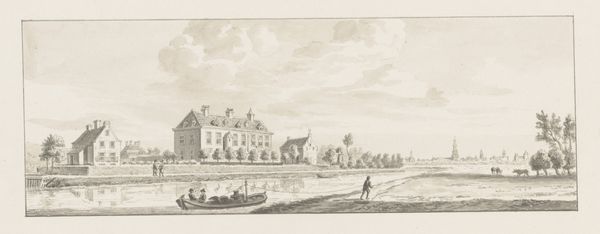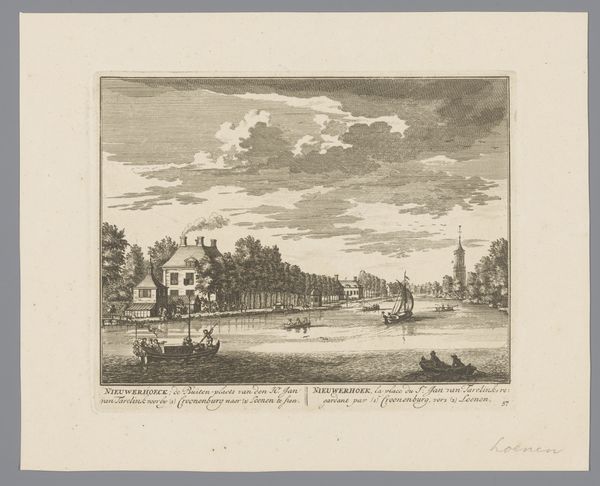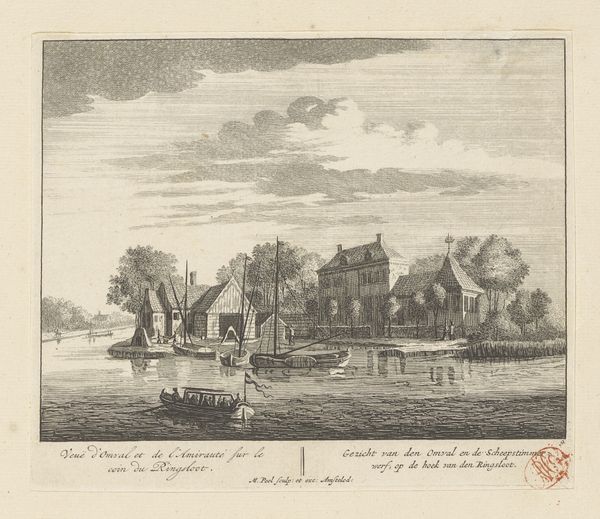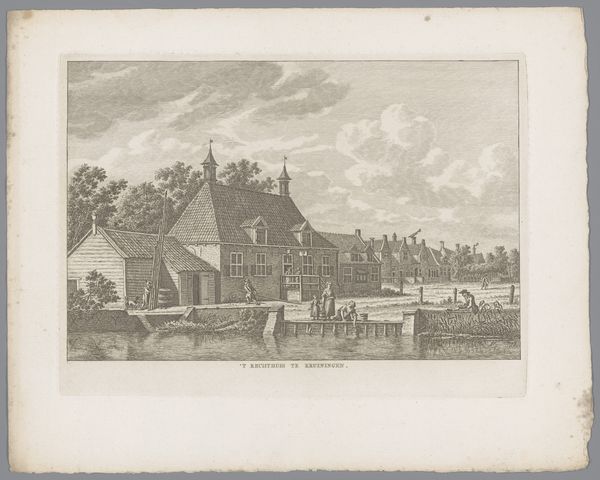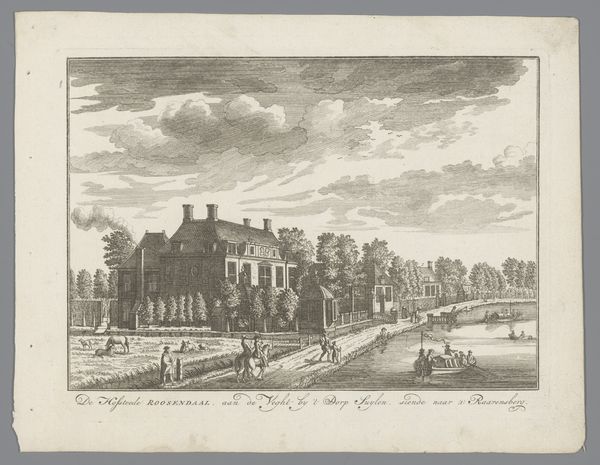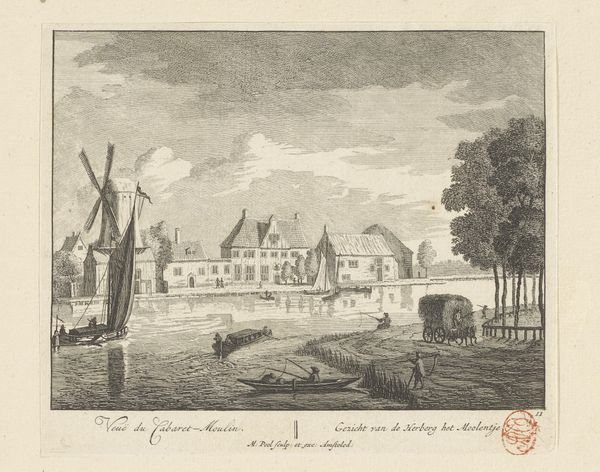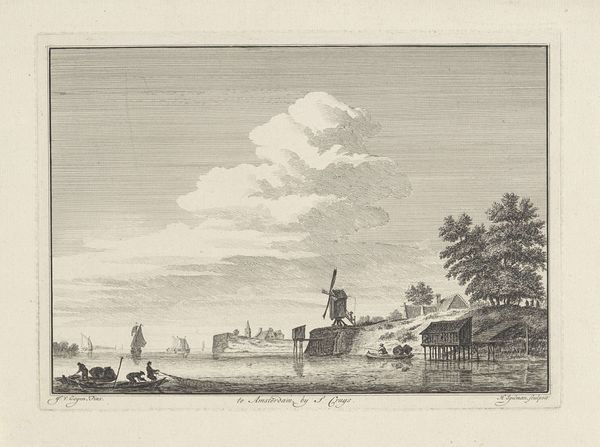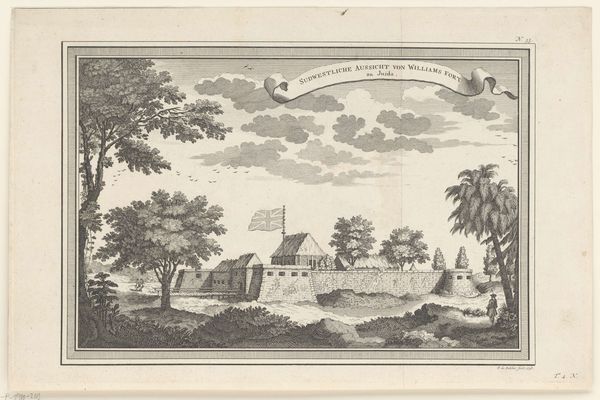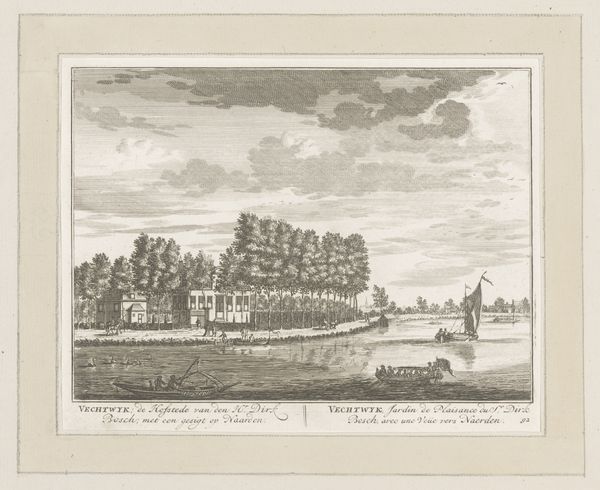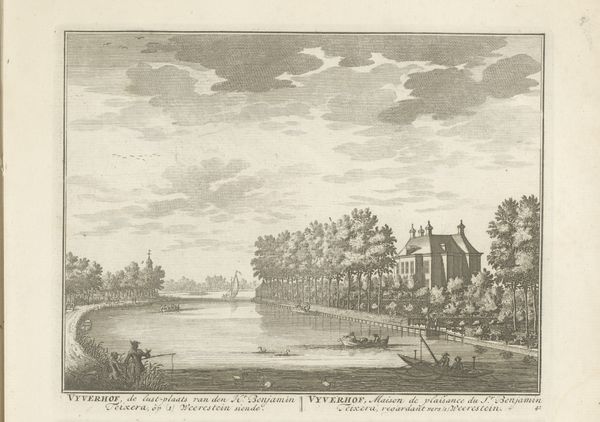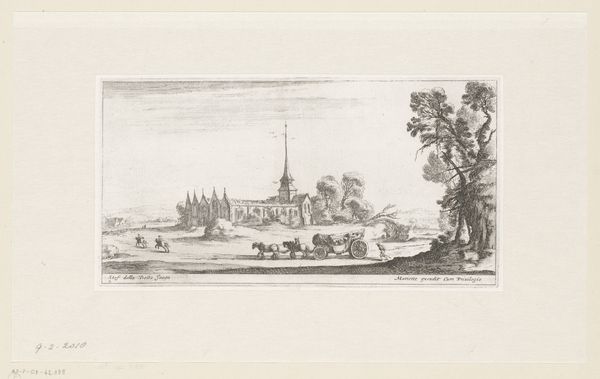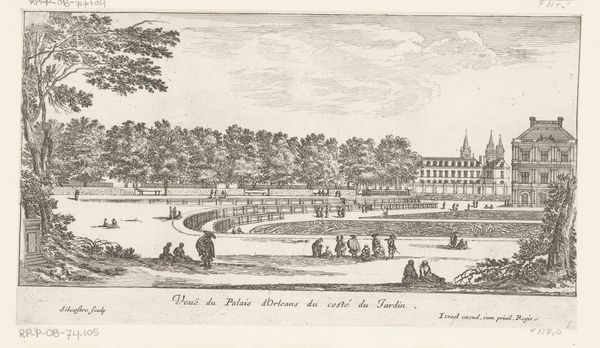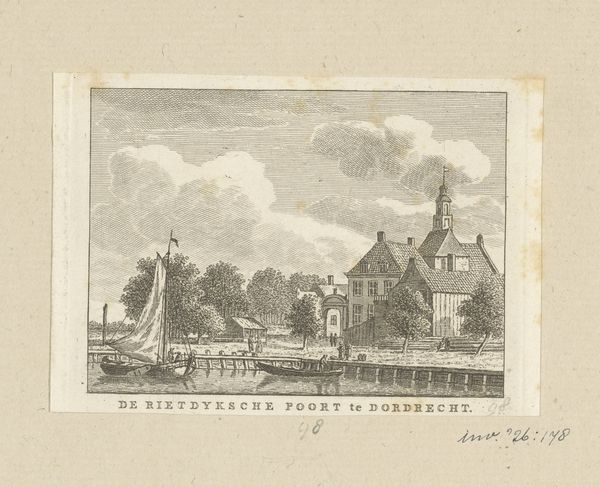
Dimensions: height 84 mm, width 212 mm
Copyright: Rijks Museum: Open Domain
Editor: Here we have Hendrik Spilman's "Gezicht op Huis 's Heerendijk," an engraving dating sometime between 1750 and 1792. I’m immediately drawn to the way the artist captures the serenity of the Dutch countryside, a sense of calm simplicity. What do you see in this piece, especially given the historical context? Curator: What stands out is how Spilman depicts not just a physical place, but a social landscape. This isn't just a house; it's a symbol of power, prosperity and, crucially, the established order of Dutch society. The print, by being reproducible, made this image of elite life accessible, furthering a particular idea of Dutch identity. Consider, who was buying these prints, and what role did these images play in shaping their views of the world? Editor: That’s a good point! So it’s less about the pretty scenery and more about the image being used to maintain the status quo? Curator: Precisely! And it is about the "pretty scenery" being employed in the service of representing something specific, perhaps a somewhat propagandistic intent. Landscape, in this context, isn't innocent. Spilman is very deliberately constructing an image that upholds a certain worldview, even if subtly. We can see this in the choice of perspective, the inclusion of figures that lend scale but are distinctly working class. It highlights the economic disparities within the republic and its effect. How does it sit within Dutch Golden Age and Baroque? Editor: I think you are absolutely right! The idyllic imagery masks the existing political intention. The serene depiction, now framed by power structures, challenges my initial perception. Thanks for helping me see this engraving with fresh eyes! Curator: Likewise. Analyzing art as cultural and social production unveils the narratives that are woven into what we might otherwise see as simply an appealing image.
Comments
No comments
Be the first to comment and join the conversation on the ultimate creative platform.
